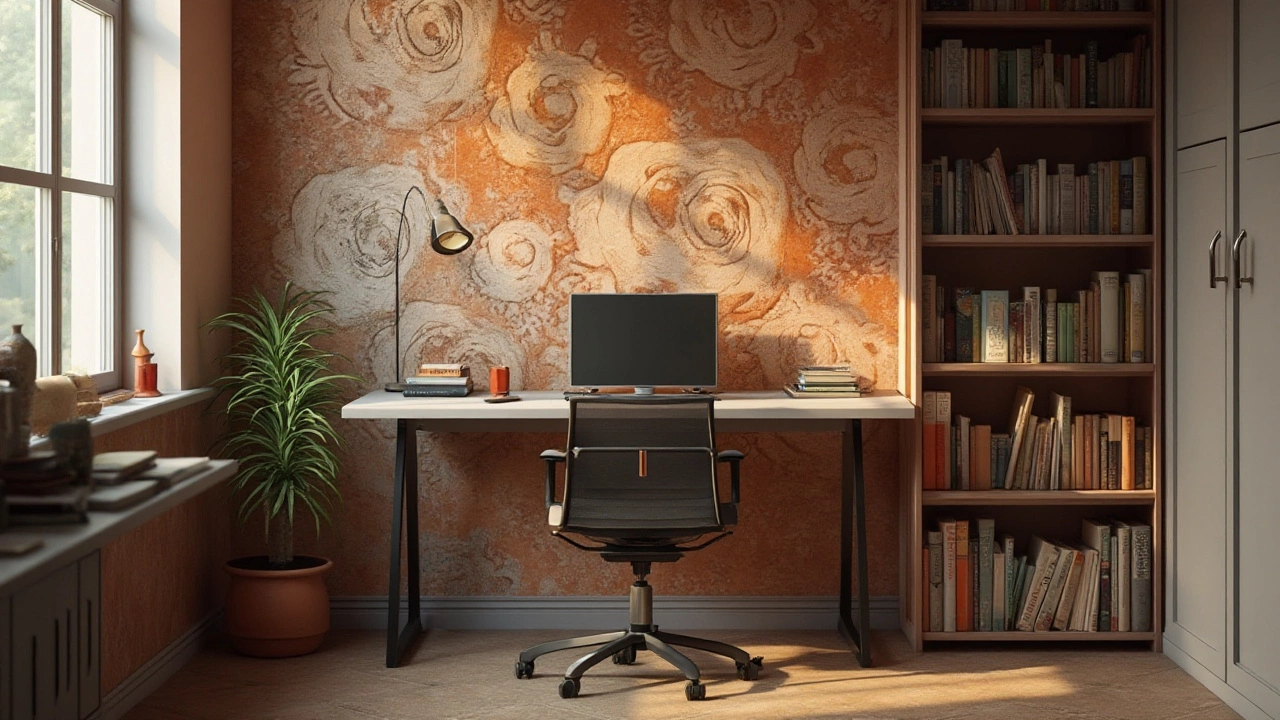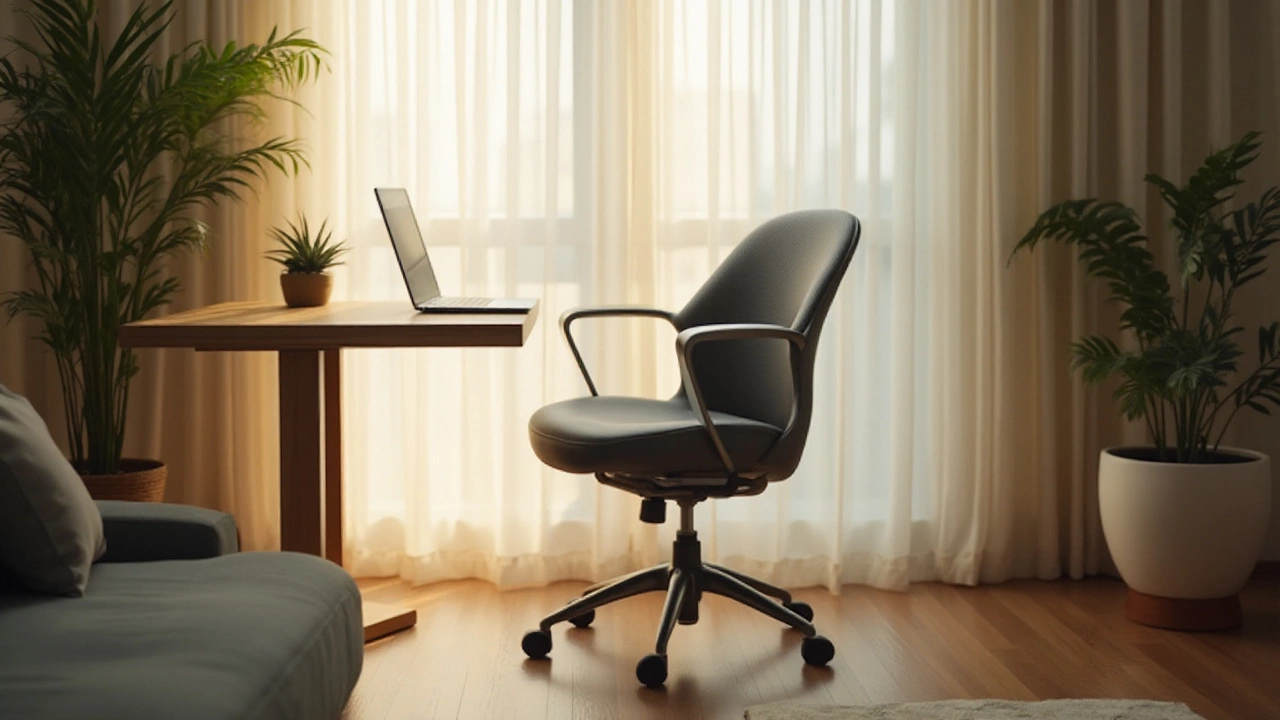When it comes to furnishing your office, choosing the right chair can be just as essential as selecting the right desk. For many, IKEA is a go-to destination, thanks to its combination of affordability and Scandinavian design flair. But amid all the talk of how their products look and function, one question often arises: Are IKEA office chairs safe?
Safety is a crucial factor when it comes to furniture, especially items we use for long periods—like office chairs. From ergonomic support to material durability, understanding the build of an IKEA chair can offer insights into how safe they actually are. In this exploration, we’ll delve into the design principles IKEA follows, the ergonomic aspects of their chairs, and how they stack up in terms of safety standards.
By the end of our journey, you’ll have a clearer picture of whether an IKEA office chair can comfortably and safely support your workday.
- Understanding IKEA's Design Philosophy
- Key Safety Features
- Ergonomic Considerations
- Potential Issues and Risks
- Maintenance Tips for Longevity
Understanding IKEA's Design Philosophy
When people think of IKEA, images of sleek minimalist furniture and cleverly packaged flat packs often come to mind. But beyond the noticeable Scandinavian design lies a thoughtful philosophy that governs each piece, including their extensive range of office chairs. At its core, IKEA's design approach is centered around democratizing modern design, offering aesthetically pleasing, functional furniture at prices accessible to the majority. This philosophy extends to how they construct their office chairs, balancing between style and safety to meet diverse consumer needs.
One striking aspect of IKEA's ethos is their commitment to sustainability. According to IKEA, they strive to not only make their products affordable but also environmentally sound. This means using recycled materials and renewable resources without compromising on safety and durability. For instance, their use of the Ten Star System in evaluating products takes into account environmental impact, quality, safety, and cost. A big part of why their office chairs maintain such popularity and trust is that they adhere to both European and international standards, ensuring a level of safety consumers can rely on.
It's also worth noting that the IKEA design process is highly collaborative. Their team of designers often works hand-in-hand with manufacturers and materials experts to create innovative products. An interesting point is that IKEA's flat-pack strategy isn't just about cost-saving on logistics; it is also about empowering the consumer to engage with the furniture creation process. An article from The Economist once highlighted, "IKEA’s products are not merely designed; they are engineered." This engineering focus is evident in the clever solutions found in their ergonomic office chair designs, often incorporating adjustable features for added comfort and personalized fit.
For assured quality, all IKEA products are rigorously tested. Their office chairs don't escape this scrutiny, undergoing durability tests examining aspects like backrest strength and wheel longevity. It's reassuring to consumers that while IKEA prioritizes affordability, they don’t cut corners on safety. Their product manuals also reflect this, providing detailed instructions to help buyers securely assemble their chairs, which is crucial to maintaining the chair's integrity and safety features.
In summary, IKEA’s design philosophy isn't just about creating beautiful products at a lower cost; it's about embedding safety, sustainability, and ease of use into every creation, including their lineup of office chairs. This ethos not only underscores the brand's longstanding reputation but also provides consumers with peace of mind, knowing their purchase has been carefully considered from every angle.
Key Safety Features
When it comes to selecting an office chair, understanding what makes a chair safe is crucial. IKEA, a leading brand in home and office furniture, integrates specific safety features into their office chairs that cater to the modern user’s needs. One of the primary safety concerns for office chairs is stability. IKEA chairs are designed with a five-point base that ensures balance. This base often comes with castor wheels equipped with safety brakes activated by changes in weight, preventing the chair from rolling away when you stand up.
Moreover, the materials used in IKEA chairs are critical to their durability and robustness. The chairs undergo rigorous testing to ensure they can withstand day-to-day use while maintaining comfort and support. IKEA employs a multi-layered process involving stress tests where their chairs are subjected to forces far beyond typical use, simulating years of office environment wear and tear. It’s not uncommon to find that some of their models are built to endure weights up to around 110 kilograms, accommodating a wide range of body types safely.
Another significant feature is the adjustability of their chairs. Adjustable parts aren't just about comfort; they enhance safety by allowing users to tailor the chair to their particular body dimensions. Key adjustable features include seat height, tilt angle, and armrests. This customization helps keep the spine in a natural position, reducing strain and preventing long-term injury. In some models, you can also find lumbar support adjustments, which are vital for maintaining a healthy posture throughout extended periods of sitting.
It’s worth mentioning that in an interview by Business Insider with Erika Kyrö, IKEA’s product developer, she stated,
“Ensuring the safety and ergonomic soundness of our chairs is non-negotiable, as we want every customer to stay comfortable without compromising health.”Such commitments underline IKEA’s dedication to creating safe products that meet international ergonomic safety standards. Additionally, many IKEA office chairs bear the coveted certification of compliance with European safety standards (EN 1335-2) that pledge their reliability.
In terms of keeping your chair safe over time, maintenance plays a big part. Inspecting the stability of the wheels and ensuring the screws and bolts remain tight can prevent accidents down the line. Additionally, keeping the chair clean and free of debris helps preserve the mechanisms that provide its adjustability. IKEA often provides detailed care instructions, empowering users to maintain their setups efficiently, thereby enhancing the chair's safety features over a longer duration.

Ergonomic Considerations
When it comes to ensuring a healthy and productive workspace, ergonomic design plays a pivotal role. IKEA understands the importance of fostering well-being through thoughtfully crafted office chairs. Ergonomics, after all, is not merely about comfort; it’s about providing the correct support that can prevent strain and long-term discomfort. IKEA's approach combines meticulous design with practical solutions, making their chairs an integral part of the modern office. The right chair can provide significant health benefits by supporting proper posture and reducing the risk of back injuries. This is especially relevant considering that people spend approximately 7 to 8 hours a day seated while working. IKEA office chairs are developed with these aspects in mind, aiming to align with the natural curvature of the spine. Their designs often include adjustable components such as seat height and armrests, which are vital to customizing the fit for different body types.
Chairs designed by IKEA often focus on dynamic support and can feature adaptable backrests that cater specifically to those who alternate between tasks throughout the day. A critical factor in this regard is the tilt mechanism, which allows for an adjustment in seating position. This flexibility helps distribute body weight more evenly, alleviating pressure on the lower back. According to experts in ergonomic design, incorporating movement into static postures can significantly enhance comfort and reduce fatigue. IKEA’s innovation in this space shines through with models that not only offer support but encourage gentle movement, facilitating better circulation.
Custom Fit for Every User
The ability to personalize your workspace is essential, and IKEA’s selection often includes chairs with numerous adjustable features. These allow you a degree of control to tailor comfort to your specific needs. Whether you're selecting a chair for personal use or outfitting an entire office, features like adjustable seat depth and lumbar support provide flexibility and adaptability. A study from the Journal of Ergonomics highlights that workers using chairs with adjustable components experience a reduction in musculoskeletal discomfort. IKEA designs tend to strive for balance between style and functionality, ensuring that the aesthetic does not compromise the ergonomic benefits their users receive.
For example, the Markus office chair is a well-regarded option praised for its supportive mesh back and comprehensive adjustability. The chair includes a high backrest that conforms to the spinal curve, promoting healthy alignment. Similarly, the Fredde series is crafted with attention to long-duration comfort, featuring generous cushioning and intuitive design enhancements tailored to long hours of use. These features underscore IKEA's commitment to safe and comfortable seating. A report by the National Institute for Occupational Safety and Health suggests that appropriate chair adjustments can improve user comfort by 60%, which is significant.
Incorporating Expert Insights
Achieving ergonomic perfection is often about integrating user feedback with innovative design methodology. Quoting Dr. James Levine, a leading voice in workplace health:
"An ergonomically sound office chair is as vital to productivity as the computer you work on."This sentiment is echoed by many experts who advocate for chairs that promote movement and offer individualized adjustments. Realizing this, IKEA consistently revises their designs, incorporating feedback to better suit diverse user requirements. Their commitment is evident in the substantial body of models they offer, each emphasizing different ergonomic elements to complement different styles of working.
As evidence of IKEA’s dedication, statistical data suggests that there is an increasing trend towards ergonomic awareness among their consumers.
| Feature | Percentage of Users Reporting Satisfaction |
|---|---|
| Adjustable Lumbar Support | 72% |
| Seat Height Adjustment | 85% |
| Durable and Supportive Design | 80% |
Potential Issues and Risks
When we talk about the potential issues and risks associated with IKEA office chairs, comfort and durability immediately come to mind. One of the most frequently reported concerns is the longevity of these chairs, especially when used extensively in a busy office environment. The material quality, perceived sturdiness, and weight capacity all contribute to the chair's lifespan. While most IKEA chairs are crafted to handle everyday use comfortably, some users report the wear and tear showing sooner than expected, especially compared to more industrially-made office chairs. It's essential to consider how the frequency and nature of usage may influence the chair's condition over time.
Users have occasionally pointed out issues related to ergonomic support—a critical aspect for those spending long hours seated. Lack of enough lumbar support or adjustable features can lead to discomfort or even strain. While IKEA does offer models with some ergonomic features such as swivel seats and adjustable heights, the extent of adjustability may not meet the needs of everyone. This can sometimes pose a risk for individuals who require specific ergonomic configurations to alleviate or prevent posture-related problems. An in-depth ergonomic assessment, therefore, becomes crucial.
Assembly is another factor that introduces variance in experience. Since IKEA furniture follows the DIY model, the correct assembly of office chairs is vital to ensure safety and function. Misassembly can result in an unstable chair, leading to potential hazards. While IKEA provides detailed guides and simple tools, the manual assembly relies on consumer skills and attention, which can differ significantly from one person to another. This underscores the importance of following instructions meticulously and ensuring all parts are firmly secured.
As noted by a 2023 report from The Independent, "The design and functionality of IKEA furniture, while innovative, do require a level of diligence from the user to ensure optimum performance."
Finally, materials used in some IKEA chairs may not always be the most robust when dealing with environmental factors such as humidity and temperature variation. This can affect parts like wheels or compressed wood-based elements, leading to breakage or wear. A practical tip for maintaining your office chairs involves regular inspection and cleaning, ensuring that adjustments such as screws or levers remain tight and functional. Adopting such maintenance routines can mitigate some of the risks associated with regular and prolonged usage.

Maintenance Tips for Longevity
Keeping your IKEA office chairs in prime condition is not just about aesthetics or prolonging the furniture's life—it's also a matter of ensuring safety and comfort for daily use. Like any frequently used item, regular maintenance can make a substantial difference, curbing wear and tear while maximizing utility. With the hustle and bustle of everyday life, it's easy to overlook furniture maintenance, but incorporating a few simple steps into your routine can enhance durability. Start by inspecting your chair weekly or bi-weekly. A quick visual check can detect any loosening of screws or unusual noises emanating from the swivels or base. Tightening screws and bolts when necessary can prevent bigger issues from developing. Neglecting this can lead to impaired functionality or even accidents.
Dust and dirt are silent adversaries of office chairs. Regular cleaning with a soft, damp cloth can protect the chair’s finish and preserve its material integrity. If you have fabric covers, vacuuming them helps maintain hygiene and appearance. For stubborn stains, spot cleaning with mild detergents can do wonders. But be cautious with chemical cleaners, as some may react negatively with synthetic materials. Investing in a slipcover provides an extra layer of protection against spills and wear, a practical option especially for homes with children or pets. IKEA offers tailored covers for several models, designed to fit perfectly and preserve the chair's original look.
The wheels or casters on your IKEA office chair also need occasional care to ensure smooth movement. Dust and hair have a knack for getting tangled in the wheels, causing friction. Cleaning the wheels monthly can prevent this, allowing for easier maneuvering and reducing strain on your floors. Simply flip the chair over and remove any obstructions with your fingers or a gentle brush. If your chair rests on a carpet, consider a chair mat, which can minimize wear on the casters and the carpet surface, ensuring smoother rolling.
Adjusting the chair according to ergonomic guidelines is another facet of maintenance that often goes underestimated. Over time, we can get complacent about maintaining correct posture, yet it is vital not only for comfort but for safety. Rearrange the chair's height and backrest to match the desk and your body requirements every few months, especially if more than one person uses the chair. Remember, an improper setup can lead to discomfort and longer-term spinal issues, which can easily be avoided by respecting ergonomic principles.
In the words of Marie Kondo, "Cherishing what you already have makes the future you want possible." While she speaks broadly of tidying, it's applicable to caring for belongings, including your office chairs.Temperature and humidity can also play a role in your chair's longevity. Maintaining a stable environment where the chair is used can prevent material degradation, especially in high humidity locales. Using a dehumidifier in moist environments can protect metal parts from rust and wooden components from warping. In dry climates, adding humidity can prevent cracking or drying out of any semi-wooden elements, striking a balance that sustains furniture life.
Preventive maintenance is the golden rule for any furniture. By addressing minor signs of wear and practicing routine care, you can extend the life of your IKEA office chair while optimizing both safety and comfort—for today and for many tomorrows ahead.

